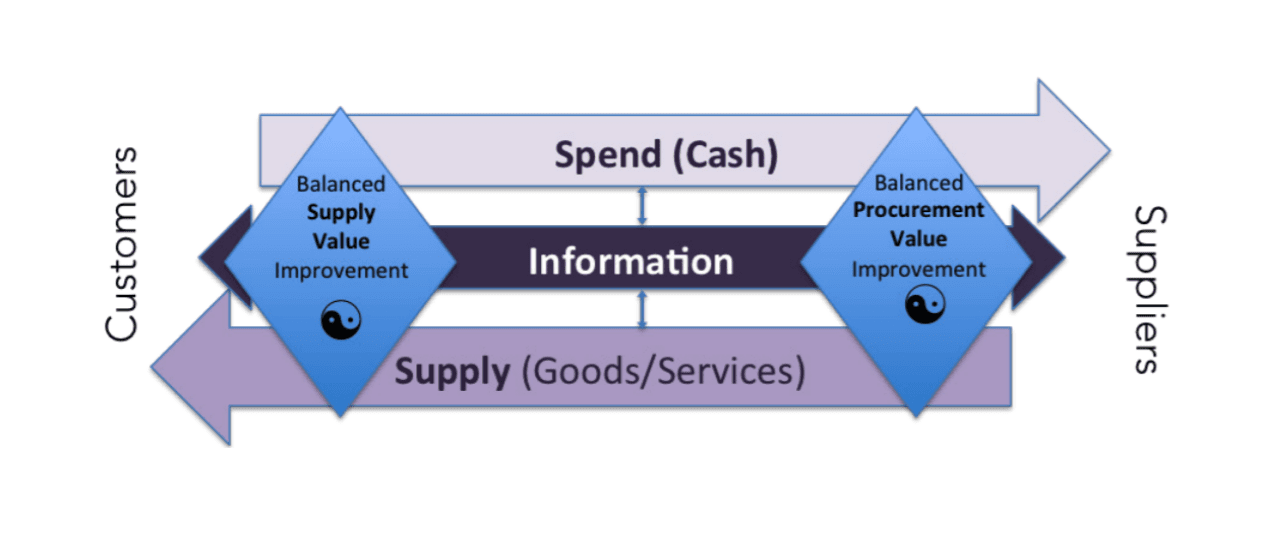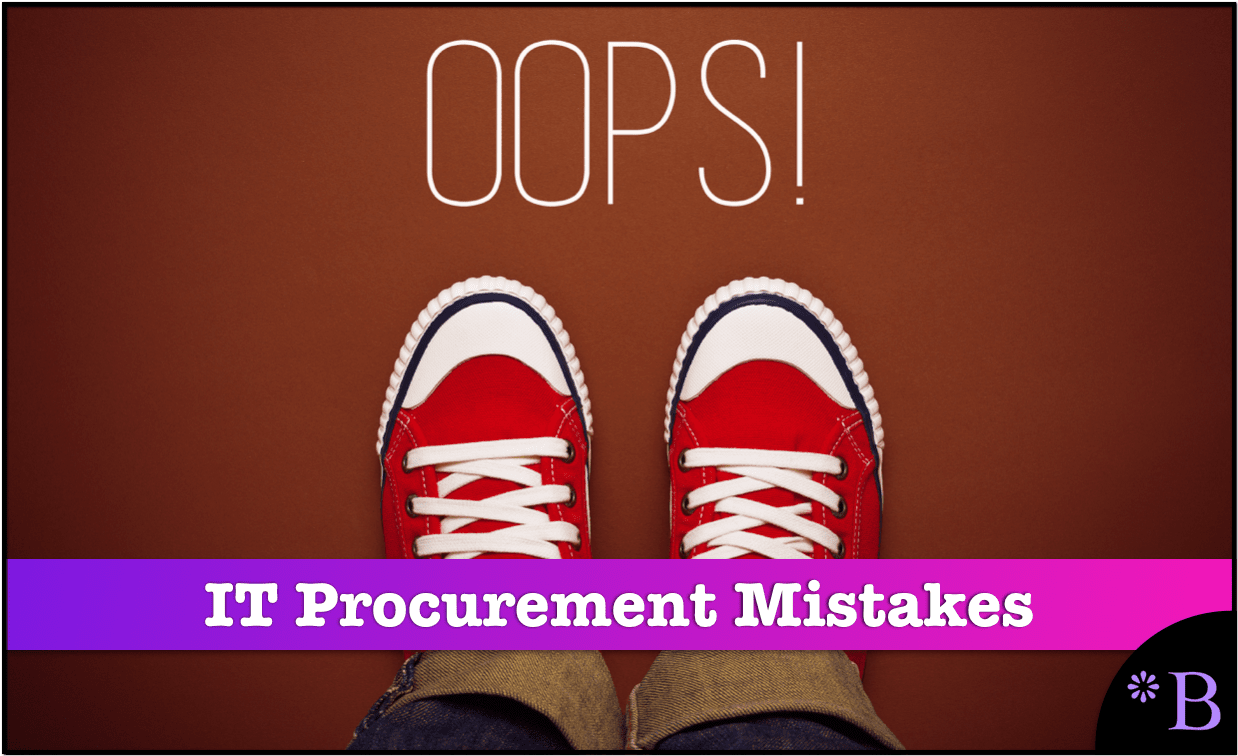How to Avoid these Nine IT Procurement Mistakes
Executive Summary
- Procurement departments can fall into traps that software vendors set.
- In this article, we cover some of the most common of these.
Introduction
Suboptimizing IT procurement is easy to do! Vendors often make it a complicated process to optimize. Procurement departments face time pressures, challenges in communicating across internal technical and business teams, sifting through a large amount of information that must be processed even to understand what is being purchased—all of these items and more factor in the overall complexity of the IT procurement process.
Of course, being forewarned is being forearmed, and that is what we will provide in this article.
The First Issue: The Overemphasis on the Legal Review
The first common issue is that they treat contracts as a legal matter and delegate contract review to corporate legal. Although a review by legal is essential. What is the problem? Lawyers don’t have the technical or operational background to evaluate IT contracts from a technical or business perspective. A lawyer cannot anticipate what could go wrong in software implementation as they have never worked on the implementation. Nor might they think to recommend a clause specifying, for example, the buyer’s right to request a change in vendor’s personnel at no charge within an initial time period. Procurement contracts are too important to delegate to the legal department alone.
Before forwarding to the legal department, read through every contract from a technical and business perspective first, and then route the contract through the legal department for final review.
The Second Issue: Accepting the Vendor Language Without Changes
IT buyers are often too conservative in their approach to requesting changes to contract language. IT vendors generally present “standard contracts.” Many buyers assume that such contracts are not easily modified. This is not true. Contract language almost always favors the seller, and any contract is an agreement between two parties. The buyer has as much right to suggest language for the agreement as the seller does. Never assume that contract language is cast in stone. The seller has to know they may lose the contract if they keep 100% of the contract as they initially presented.
For example, we have seen SAP waive indirect access rights, a major liability for companies because SAP was told there would be no sale if the clause remained in the contract.
Often the initial negotiation or sale is the only opportunity to remove some of the more onerous clauses.
The Third Issue: Keep From Being Put Behind the 8 Ball and Review Vendor Contracts Early
One error is waiting until the business or IT is 100% in favor of one vendor before reviewing their contract. There is no reason contracts can’t be sent earlier in the selection process. Pricing or terms may invalidate the vendor from consideration (under rational circumstances). The vendors all have standard contracts, and they should be able to share them at will.
That way, the terms and (a rough approximation of pricing) can be reviewed before anyone falls in love with the software. Negative responses from vendors to requests to provide such details normally mean that they are attempting to overtly control the process or prefer the prospect not to know the details until they are under time pressure. Either way, it is a red flag and a harbinger of bad things to come. Furthermore, such information hoarding should be communicated back to the business and IT.
The Fourth Issue: Understanding The Importance of Benchmarking
Benchmarking allows an organization to understand the competitiveness of its purchases via a process of periodic comparison.
A benchmarking provision in a procurement contract ensures that an organization is not without recourse where the prices are contractually set and not reflective of current market prices. The services do not deliver as anticipated.

The Importance of Using Benchmarking Provisions
Price is a major consideration when procuring IT services. With time, IT prices sometimes decrease, and products become more advanced. Products that are up to date on day one of the contract will likely not be current one or two years into the contract. This can result in ongoing shipments of overpriced or outdated products and services. Benchmarking is one of the various strategies for dealing with this challenge. Let’s look at some scenarios where benchmarking provisions can empower your organization.
The Fifth Issue: Price Adjustments
Today, IT vendors vary significantly in terms of operating scale. Mega-vendors operate at a global scale, offering services to millions of customers and billions of users. At this massive scale, vendors command significant volume discounts from their suppliers and manufacturers. These discounts are often passed on to their customers as price reductions.
For instance, AWS has reduced prices on cloud computing services over 60 times since 2006. In some years, the vendor introduced several price reductions across multiple products and services. However, AWS is a rarity. For most on-premises vendors, the prices go up every year.
A 3-5 year IT contract should include a benchmarking provision to ensure that your organization is not paying more than you should by comparing competitive offerings and adjusting pricing for the same product or service.

The Sixth Issue: Double Charging for Software
Contract provisions apply to more than benchmarking and price adjustment. You can also use provisions as an insurance policy against vendor double-charging.
Vendors often change their licensing policies unilaterally. For instance, SAP recently introduced a document-based ERP licensing model charging customers by the number of documents created in the system. For customers who have previously licensed the software on a user basis, this means they get double-charged: once for user access and again for document creation. Consulting companies and media that cover SAP are cautious never to point this out.
Make sure you include a provision in your contract that protects you against being double-charged.
The Seventh Issue: Vendor Forced Upgrades
SAP recently announced the end of support for their current ERP system (ECC6) by 2025. Customers who do not wish to upgrade to the new S/4HANA system will be charged additional support fees. Moreover, customers will be charged additional fees to support a product that no longer receives any further development or enhancement. New features and enhancements are only available in the new version. This is an example of a forced upgrade.
Make sure your contracts include provisions that protect you against forced upgrades.
The Eighth Issue: Mitigating Vendor Lock-In
In January 2017, Oracle quietly changed its database licensing policy and removed the core licensing factor (CLF). This change effectively doubled the database license for customers who choose to run Oracle databases on AWS, Azure, and Google Cloud. This is an example of vendor lock-in. Vendors suddenly apply exorbitant licensing fees to limit customer choice and keep them locked into their platforms. Make sure your contracts include provisions that protect you against vendor lock-in.
The Ninth Issue: Bait and Switch on Bidding and Resource Quality
To secure contracts, vendors frequently present an intentionally deficient financial proposal. Once awarded, they may subcontract parts of the project to a cheaper supplier and turn the difference into their margin.
In other cases, vendors may replace experienced (expensive) resources with less experienced (cheap) resources. This is one of the oldest tricks used by consulting firms. Each consulting company has its top resources. However, in most cases, they are already staffed. Once the contract is signed, several new names and new resumes actually work on the project. Or the more experienced resources show up but then promptly leave. Over time the consultants tend to become less senior and less capable as the consulting company has pulled more money out of the account.
Ensure your contract includes a provision to give you the right to request a change in the vendor’s personnel at no charge within an initial time period.
Conclusion
These nine issues come up on most software selections. But really, there are straightforward answers for each. One of the common problems that procurement departments face is that they often go a significant amount of time between major software purchases. In that time, memories can fade, staff can turn over, and other factors can reduce the institutional knowledge of the issues they encountered the last time. This, of course, gives an advantage to the vendor.
